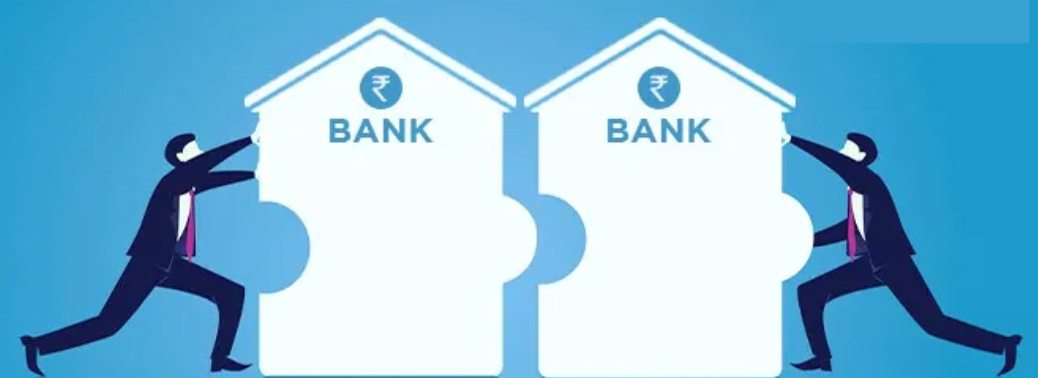Banks remain an important aspect not just of my life but of the whole economy. After all, they provide access to lending amounts that can be used in various ways, particularly when it comes to lending and credit facilities.
However, I have always wondered just how much banks can lend, given that these financial institutions cater to thousands, if not millions, of people around the world. Surely, there are banks that have a surplus, while others have a deficit in their reserves. This is where the interbank lending market comes in.
While this topic is quite clear for many people, especially in the finance and banking world, this term and market can be unclear for most people like me. So, in this article, I will detail the interbank lending market and how it works. Take a look.
- What Is An Interbank Lending Market?
- A Brief Look Into The History Of The Interbank Lending Market
- Importance Of An Interbank Lending Market
- What It Takes To Be An Interbank Lending Market Participant

What Is An Interbank Lending Market?
By its name alone, I think it is safe to say that the interbank lending market is the market or avenue in which banks conduct deals with other financial institutions. These banks often extend loans to one another through the interbank lending market for a set period of time.

What I found interesting about these markets is that the main reason the interbank lending market exists is to help banks and other participating financial institutions provide their services to their clients as smoothly as possible.
Banks and other financial institutions are typically required to have a set amount of loan or credit reserves under regulations provided, otherwise known as the cash reserve ratios. This regulation urges those with more than the required liquidated assets to offer loans and assistance to other banks in need in exchange for an interest.
Likewise, suppose financial institutions fail to have sufficient funds and do not have assets they can liquify to fulfill the regulations. In that case, they result in borrowing through the interbank lending market. This normally occurs on a short-term basis, usually overnight and almost never more than a week.
Check Out The Interbank Rate And How It Works
I have already mentioned how the interbank lending market operates, but I will further detail the interest rates that come with these transactions and loans in this section. Because of the fast terms, the repayment interest rate for these transactions is often referred to as the overnight rate.
The rate levied on these loans is usually base on the current rate of federal funds on the market rate determined by the Federal Reserve in the United States, with the agency decidedly keeping the interest rate at 2.5%. Besides the U.S., there are also other entities that determine their own lending rates, such as Europe, Hong Kong, India, Shanghai, Australia, and many others.
I discovered that the interbank rate is affected by varying factors, such as the prevailing rates or how much money is available in the market today, and the overall term length.
A Brief Look Into The History Of The Interbank Lending Market
Another study claims otherwise, with the development stage of this practice beginning around 1869 to 1914. While most of its origins are still largely uncovered in history books, I found that early reports of state banks submitted reports to Congress that showed their involvement in interbank lending markets as early as 1857.

From 1869 to 1882, those who participated in this practice only borrowed an average of nine million, and in the succeeding years from 1883 to 1892, this amount averaged only 16.5 million dollars. The borrowings, however, increased from 1893 to 1914, with the borrowings going up to $380,000,000. This rise in borrowings may have stemmed from breaking down the stigma of borrowing.
Interestingly enough, I also found another source stating that the interbank lending market, otherwise known as the borrowing and credit market, was founded in China sometime in 1984 but was only picked up and made steady around 1996.
Though there may be differences from a historical standpoint regarding the origins of the interbank lending market, one thing is clear: it is prevalent in various economies and sectors.
Struggles During The 2007 Financial Crisis
There was a great panic and financial crisis from 2007 to 2008, which I and the rest of us know as the great financial crisis. This led banks and other financial institutions to experience a dramatic turn of events to help safeguard their assets.
One of the most drastic measures that I have noticed was taken during this time is banks lessening and even curtailing their interbank lending relationships, with the United Kingdom even hoarding liquidities. Germany also took steps to lower the risk of interbank transactions.
The United States also instated a run on repo program with increased use of $10 trillion in assets. Italy’s interbank rates likewise depended on the borrowing approaches of consumers during that time.
Importance Of An Interbank Lending Market
I would say that one of the most widely used banking services today involves credit and transfers. These services mean that the net-lender bank would need to cover short-term withdrawals by depositors. Luckily, interbank lending lets them borrow from another bank to support this model.

In a way, banks source their funds from other banks to cater to their clients and operate their main services. This requires liquid assets, which they fill through interbank loans. In fact, I found that these types of loans are important to maintain an effective and efficient banking system.
A working banking system can sustain its operations by funding long-term loans with the help of short-term funds; in the past, it is typically through customer deposits. However, banks now rely on commercial paper, repurchase agreements, certificates of deposit, brokered deposits, and foreign exchange liabilities.
A financial institution that cannot fund its services and liabilities is facing funding liquidity risk. Interbank lending and borrowing can help banks settle their liabilities, making it important in the overall banking market.
A Deeper Look Into What It Provides
Aside from helping banks operate optimally, I understand that interbank lending plays a role in setting lending rates. The interest rates used in the interbank lending market are used as a reference by different financial instruments like adjustable-rate mortgages and syndicated loans.
In short, these reference rates serve as benchmarks for many financial matters, such as corporate cash flow analyses. It is so influential that it affects the economy as it impacts investment decisions of firms on bigger scales and households on smaller scales.
The interbank market does not only deal with local currencies but foreign currencies, as well. Currency trade between banks is composed of pre-agreed amounts and rates from both sides.
What It Takes To Be An Interbank Lending Market Participant
Given the definition and function of interbank lending, I can safely say that the interbank market is participated in by different banking institutions. However, it is important to remember that these banks should be considered interbank market makers.

To be considered such, banks should have activities in which they provide prices to other banks and ask for prices. This is the part where the parties agree upon an amount and rate before the exchange happens.
Deals between banks mostly involve a lot of money, typically playing more than $1 million, with some reaching $1 billion in one agreement. Interbank market makers can be found across the globe. These transactions usually happen within seconds, but some can last longer.
Take the federal funds market, for example. These unsecured interbank lending markets can make over-the-counter transactions in which no contracts are involved and are made overnight. However, some loans can have longer maturities. In the United States, regulating the fed funds market is essential, and this is done through the US’ monetary policy and its implementation.
Current Players In The Interbank Market
Those who participate in such large-scale and speedy lending and borrowing transactions involving local and foreign currencies are considered players in the interbank market. Most banks can be considered players in the interbank market.
A few years ago, the top players included Citi, Deutsche Bank, Barclays, JP Morgan, UBS, and Bank of America Merrill Lynch. Others include HSBC, BNP Paribas, and Goldman Sachs. Currently, many of these names still show up in the list of major players. Citicorp and JP Morgan Chase top the United States, while Deutsche Bank and HSBC lead Germany and Asia.
However, let me remind you that banks are not the only financial organizations participating in the market. Trading firms and hedge funds also play a role in the interbank market as they contribute to establishing exchange rates.
The Takeaway
Interbank lending can be a complicated process, especially for people like me, but it is an important part of the economy. Now that I know how things work in the banking world and the overall market, I can appreciate the banking services it enables.
